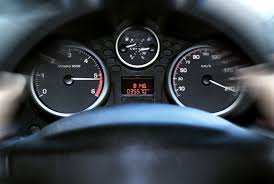
National Odometer Day, is all about celebrating the invention of the odometer and how it has helped the design and function of automobiles progress. Without odometers, how could we track the progress we made?
You are probably wondering what an odometer is. This is an instrument for measuring the distance traveled by a wheeled vehicle.
It can be mechanical, electronic, or a hybrid of both technologies – electromechanical. These instruments have been around for a very long time with early forms tracing back their origins to ancient China and the Greco-Roman era.
The odometer is sometimes called an odograph or mileometer (or milometer), especially in countries that have adopted US customary or imperial units.
They are one of the meters that come standard when purchasing a new car. Keep track of the wear put on your engine by tracking the distance you’ve traveled.
How did this invention come to be? Why is it so important?
The origin of the word odometer comes from the Greek words hodos meaning path or gateway and metron, meaning measure. In Ancient Greece, the distance was measured by bematists, people specially trained to measure the distances by counting steps.
However, the first one was invented in the Han Dynasty in China.
The device was a road carriage with a drum, and each time their measurement of distance was met, a drum was hit by a wooden figure. This device is considered to be highly advanced and helped influence the invention of it.
As for the modern one, there have been multiple stories about when it first came to be. No matter how it happened they all contribute towards what we consider to be an essential part of people’s cars.
In 1847, William Clayton, a Mormon pioneer, invented his “radiometer” and attached it to his wagon while heading to Utah.
The idea helped build the odometer for the first automobiles invented during the early 1900s.It was developed by Arthur P. and Charles H. Warner of Beloit, Wisconsin, and was patented as the “Auto-Meter”.
Since then, they have helped understand the lifespan of cars and gives vehicle owners the ability to pay attention to their car and do maintenance. National Odometer Day was created to remind people of this fact, remind them to check their odometers, and take better care of their cars.
How to read the odometers
The distance recorded by a vehicle’s odometer increases over time as it makes more trips. Several calculations go on under the hood of your car to maintain an accurate odometer.
In rare instances, such as when the engine is replaced without recalibrating the onboard computer, It may lose its accuracy. The computer will keep calculating based on the original engine, and this translates to inaccurate readings.
It is also important to note that GPS is a line-of-sight technology and can affect their reading. This can be the case when you only use GPS to track yours.
There are situations where GPS connection has to be re-established, such as when parking underground or when you drive through tunnels.
When this happens, chances are your odometer will record less distance than what your vehicle traveled in reality.
How odometers are calculated
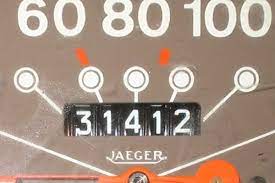
Today, most of them work by recording wheel rotations. The distance traveled is then calculated by multiplying the number of wheel rotations by the tire circumference. The circumference of a tire (circle) is obtained by multiplying the tire diameter by pi (3.1416).
Non-standard and severely worn-out tires corrupt them reading as they introduce the errors. The actual distance traveled is calculated by the simple formula below:
Actual distance traveled = [(Final odometer reading) – (initial odometer reading)] * (actual tyre diameter) / (standard tyre diameter).
However, understanding how odometers work goes beyond this simple formula. They are sometimes off, but that’s normal as no system is flawless. It’s errors are proportional to those of the speedometer.
How odometers work
Throughout the years, cars have evolved in terms of design, efficiency, and technology. However, their operation has not witnessed any significant changes. Cars still employ either of the two approaches to track mileage.
Mechanical odometers
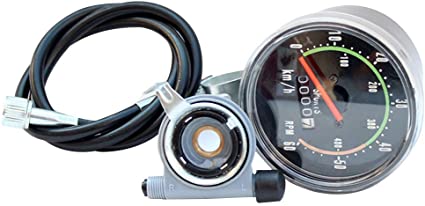
The operation of mechanical odometers starts at the transmission. Here, a small gear used for advancing the odometer is fitted into the transmission system. The speedometer drive cable is then connected to this small gear. The other end of the cable connects to the instrument cluster.
When the engine is turned on, and the car starts moving, the internal transmission gear turns. The connected drive cable conveys this internal transmission gear motion to a set of gears linked to changeable digits.
Counting starts at the right side of the set of numbers. The process [counting] goes on until the amount of distance traveled by the vehicle forces the adjacent digit on the left to roll over.
The process repeats itself until all adjacent numbers reach their peak value. At this point, they all reset to zero and start over again. It is not uncommon for the digits on a mechanical odometer to be slightly out of line.
Electronic odometers
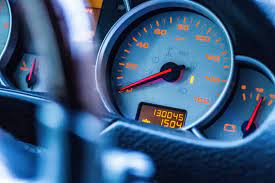
Electronic odometers came after the mechanical ones and are typically digital. As the name suggests, these rely on the vehicle’s electronics to establish accurate mileage. Much like mechanical odometers, electronic ones still employ a special gear to change the count reflected on the dashboard.
In place of the drive cable, however, a magnetic sensor is used to track the number of gear turns in the transmission. The signal obtained is then conducted by wires to the onboard car computer which interprets and converts the information into a mileage count.
Electronic odometers have the edge over mechanical ones due to their better accuracy. Since they aren’t easily manipulated, they generally give an accurate count of the vehicle’s mileage. Digital electronic odometers make car buying safe for potential car owners considering second-hand vehicles.
It is worth noting that they come with an additional trip meter known as a trip odometer. This trip meter helps car owners determine the mileage of any particular distance without checking the main one.
Here are some tips to avoid falling victims to it’s fraud.
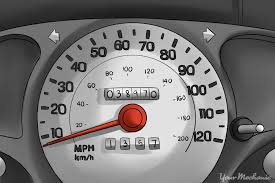
- If the car uses a mechanical odometer, check and listen for it clicking.
- Inspect the inside of the clear plastic lens cluster cover for any fingerprint marks.
- Check out the maintenance history of the vehicle.
- Use car history websites in Australia (such as CarFacts and CarHistory) to find out facts and reports about the car, including reported odometer readings.http://find out facts and reports
- Ask a trained technician to inspect the car and estimate its mileage and valuation.
How to celebrate Odometer day
Take a drive in your car and see where you end up. Get in the habit of tracking your miles and reset your odometer after each drive. By keeping track of your mileage, you’ll be able to better care for it and track how efficiently you’re using gas.
Share pictures of your travels and odometer on this day with your friends and family. They are useful whether you’re driving around the corner to your local grocery store or on a long trip. Paying attention to the distances you’ve traveled will help you maintain your car and ensure it’s performing well.



